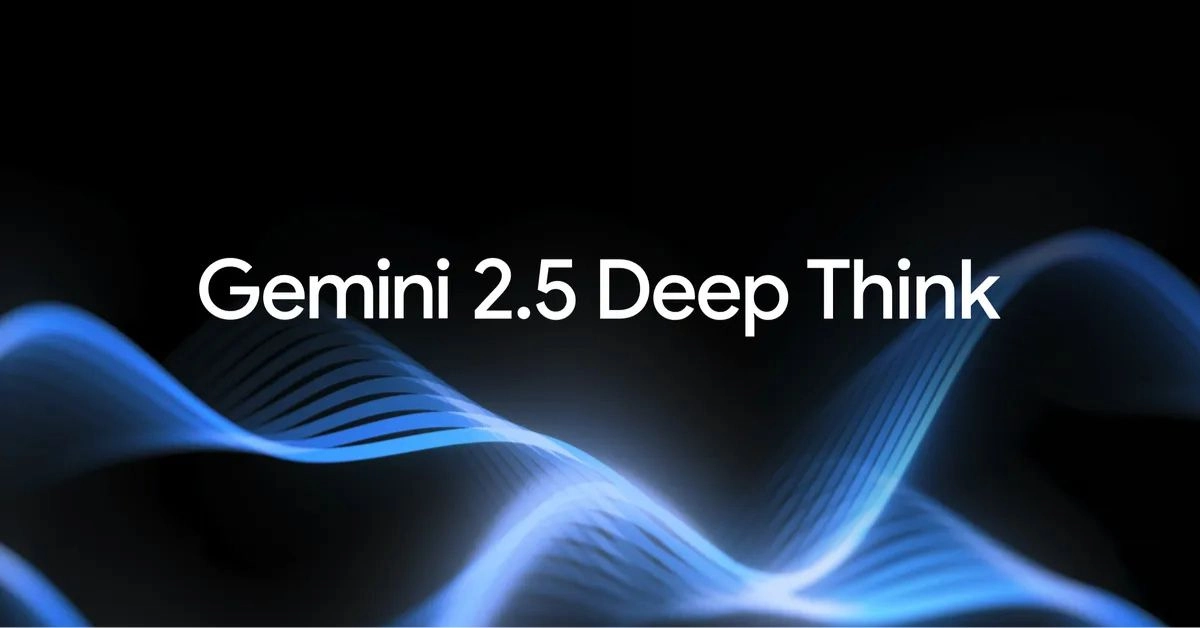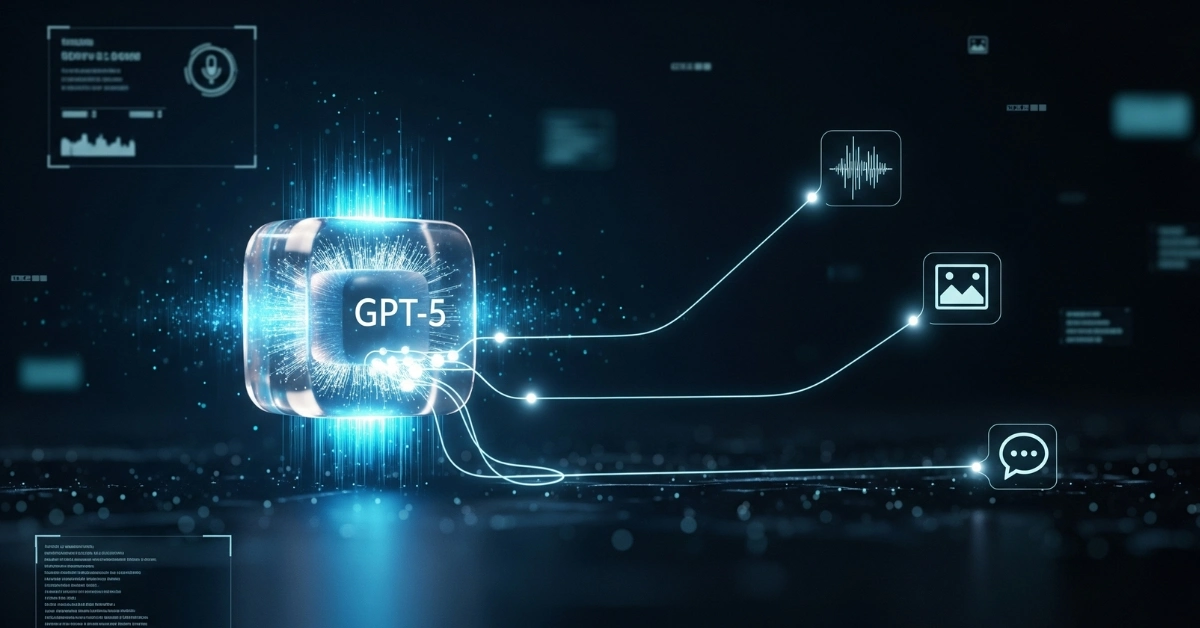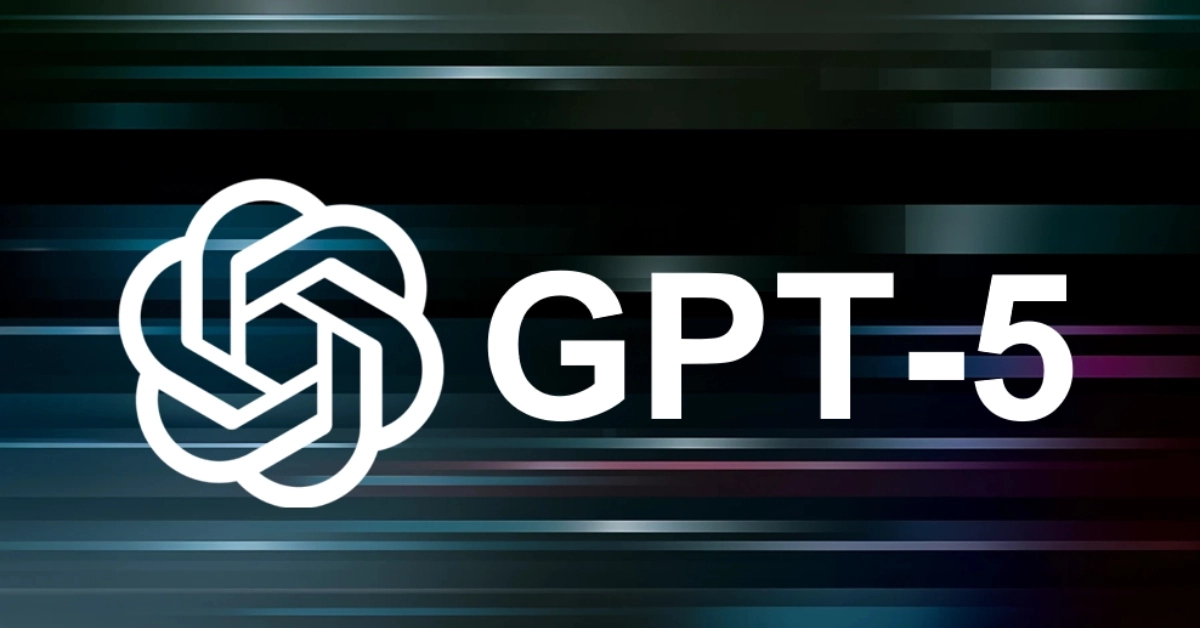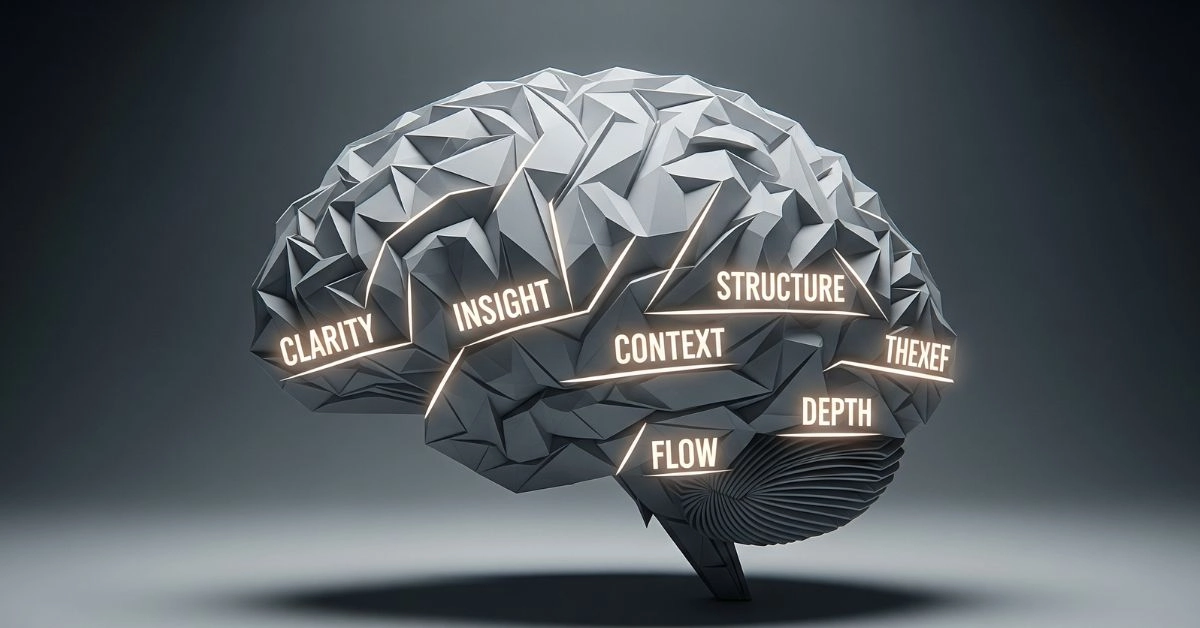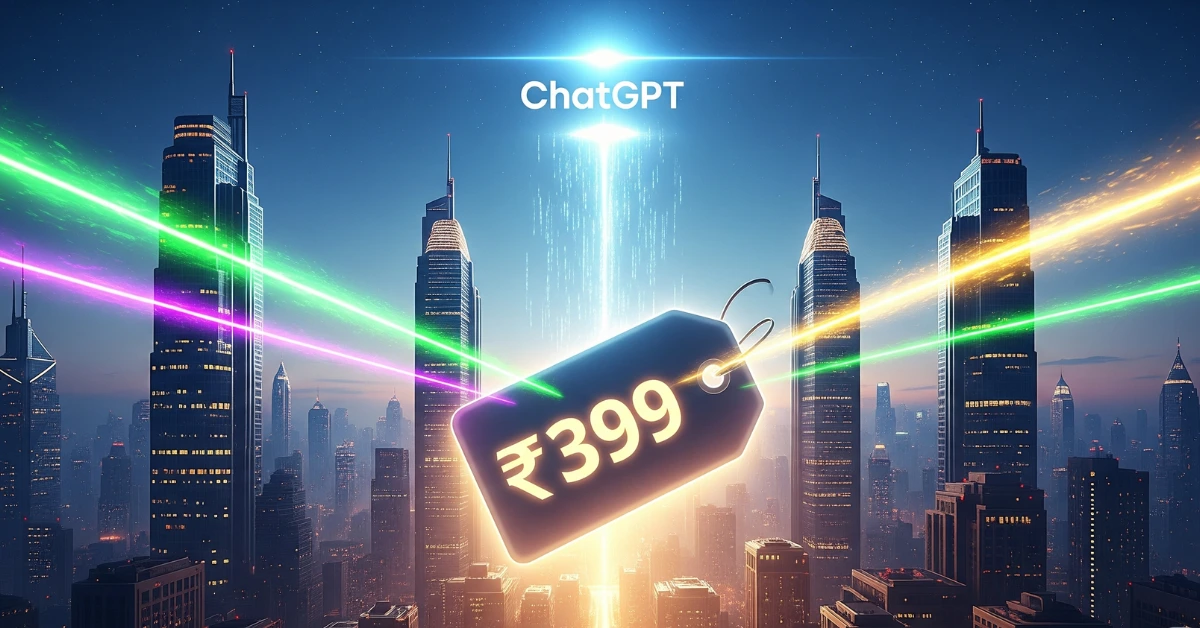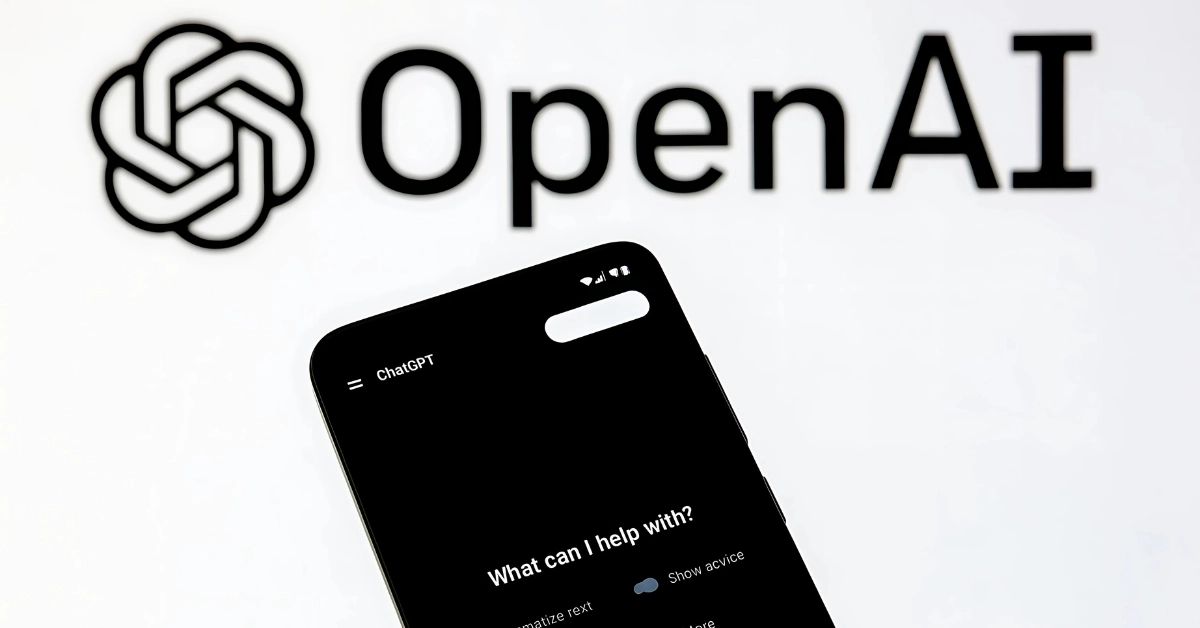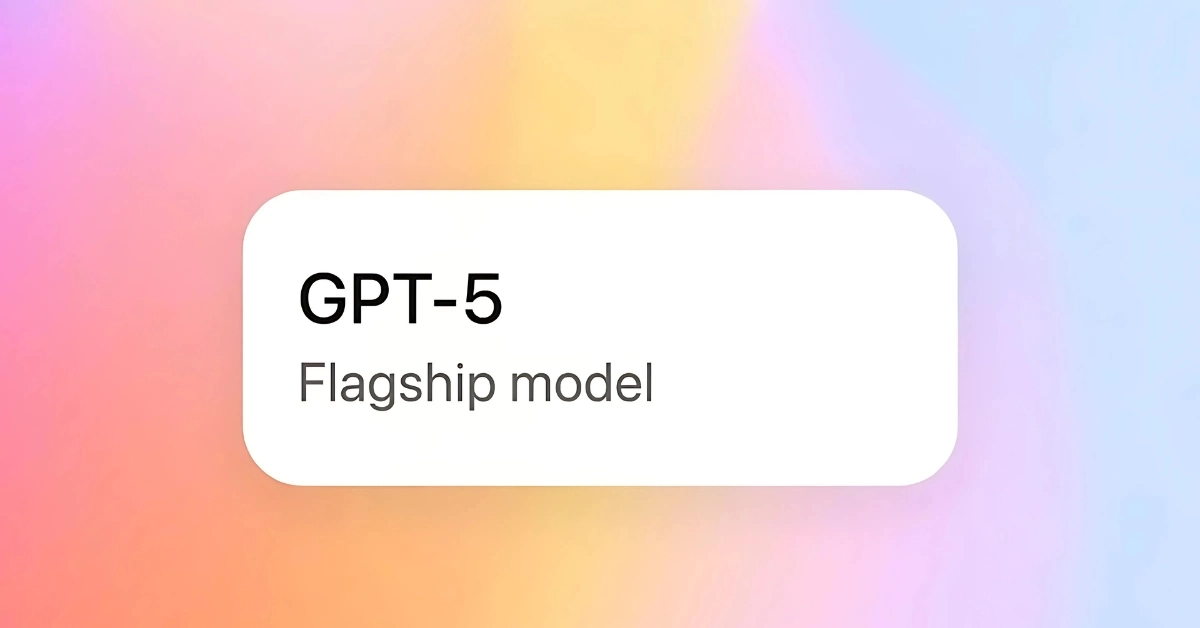Deep Think Isn’t Just Another AI Tool. It’s a New Way to Think
Most AI tools are built to react. You ask something, they answer. Fast, fluent, and often useful, but not always thoughtful. Deep Think flips that script.
It’s not about speed alone. It’s about reasoning.
Deep Think is Google’s most advanced problem-solving system inside the Gemini app, built for people who need more than surface-level replies. It doesn’t just respond, it reflects, compares, revises, and explores possibilities before giving you an answer.
That makes it different from most models you’ve used, including earlier versions of Gemini or even ChatGPT. While those models follow a straight path to a solution, Deep Think opens up a web of reasoning paths, runs them in parallel, and often surprises you with creative or structured answers that don’t come from a one-shot guess.
And yes, it’s powerful. But more importantly, it’s useful, especially if you work in areas like coding, research, design, or anything where the first answer is rarely the best one.
So where did Deep Think come from? And why are mathematicians and developers treating it like a new kind of partner?
Let’s break it down.
From Math Olympiads to Creative Problem Solving
Deep Think wasn’t built in isolation. It has roots in one of the toughest arenas for logic and abstract thinking — the International Mathematical Olympiad (IMO).
Earlier this year, a heavyweight version of Gemini 2.5 Deep Think scored above the gold-medal threshold at the IMO. That version wasn’t fast. It took hours to reason through each problem. But it proved one thing clearly: an AI could compete at the highest levels of symbolic reasoning and step-by-step problem solving.
Now, Google has taken that research-grade engine and transformed it into something more usable. The version available inside the Gemini app is tuned for responsiveness, not deep compute. It doesn’t match the gold-level model’s brute force, but it does reach bronze-level performance on IMO-style benchmarks, based on Google’s own internal tests.
And it’s not just for equations.
Google designed Deep Think to be a cross-disciplinary problem solver. Whether you’re building software, testing a scientific idea, designing an interface, or iterating on a creative plan, Deep Think is built to go deeper. It doesn’t rush. It doesn’t guess. It explores possibilities the way real experts do.
That’s what sets it apart. This isn’t about producing answers faster. It’s about getting to better answers, even when the question doesn’t have a clear path forward.
How Deep Think Works Under the Hood
Deep Think doesn’t behave like typical AI assistants. Most models are trained to predict the next word quickly. Deep Think is trained to pause and consider.
At its core is a technique called parallel thinking. Instead of following one straight line from question to answer, Deep Think branches out. It generates multiple ideas simultaneously, compares them, refines its reasoning, and then synthesizes a stronger response.
This approach mimics how humans solve tough problems by holding competing ideas in mind and weighing them against each other.
Google also built Deep Think with two key capabilities:
- Extended thinking time
Rather than snapping to a conclusion, Deep Think takes longer during inference. That extra time lets it explore more reasoning paths, evaluate trade-offs, and even change its mind mid-process. - Reinforcement learning for deeper reasoning
The model was fine-tuned to prefer depth over speed. It’s rewarded for following longer logic chains and exploring alternate hypotheses, not just arriving at a fast reply.
The result feels different. You don’t just get an answer. You get something closer to a collaborator — one that’s willing to reason through your prompt, reframe the problem, and propose a solution that considers more than just the obvious.
Deep Think isn’t designed to be clever. It’s designed to be careful. And that shift matters more than it seems.
What You Can Actually Do With It
Deep Think shines when the problem is messy.
It’s not built for surface-level searches or casual replies. Its real strength appears when the task requires depth — something that needs logic, creativity, and iteration. That includes tough coding problems, scientific questions, design revisions, or even multi-step planning.
In software development, Deep Think can help you go beyond syntax or boilerplate. It’s particularly effective at architectural reasoning, including things like trade-offs between time and space complexity, or choosing the right data structure for long-term maintainability. If you’re stuck debugging or reworking a component, Deep Think can lay out alternatives and refine the logic alongside you.
In research and science, it can process dense literature, spot inconsistencies, and even help generate early-stage hypotheses. The model isn’t just reading for facts. It’s thinking about what might be missing or what comes next.
Designers and creators can also use Deep Think to refine layouts, visual flow, and user logic. One standout example Google shared involved voxel art. They asked three different versions of Gemini to generate a pagoda scene using colorful voxel blocks. The difference in output was dramatic.
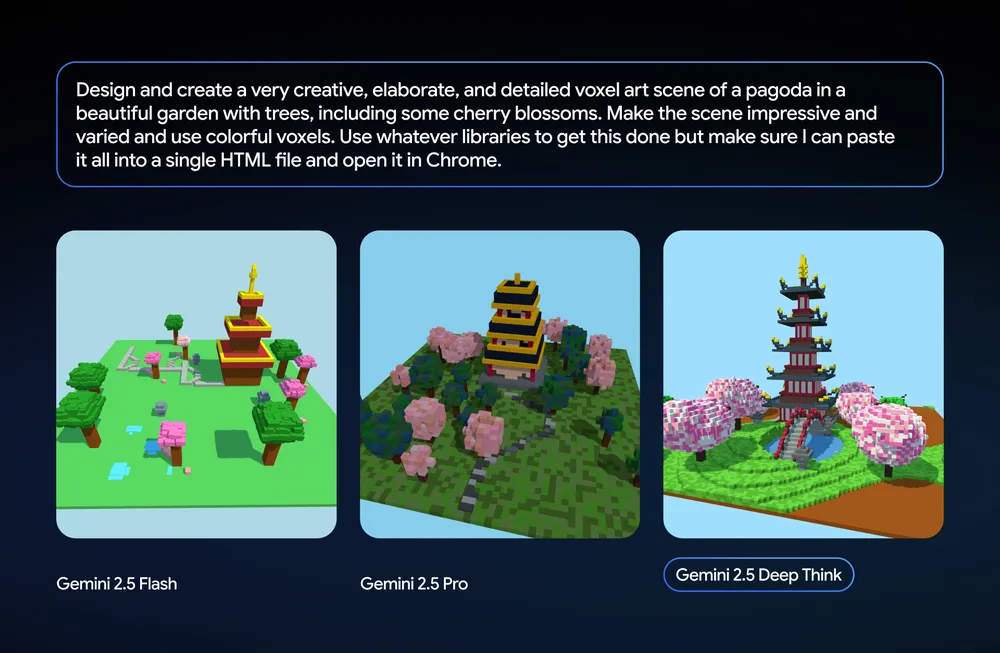
In that test, the Deep Think version didn’t just look better. It showed a clear understanding of form, detail, and aesthetic balance, all without human edits.
This is what Deep Think is designed for. Not just output. Iteration. Improvement. Better versions. It gets better the more you push it.
The Benchmarks Back It Up
Deep Think isn’t just promising on paper. It performs where it counts, on the toughest AI benchmarks in the world.
Take LiveCodeBench V6, a test of real-world coding ability. Unlike simple syntax checks, this benchmark grades how well a model can write competitive, efficient, and correct code. Deep Think scored 87.6%, beating Gemini 2.5 Pro, OpenAI o3, and Grok 4.
In Humanity’s Last Exam, a sprawling test of reasoning and knowledge across science, math, and humanities, Deep Think again topped the chart with a 34.8% score. That’s significantly higher than other models that don’t use external tools.
The most impressive result? Deep Think reached 60.7% on the IMO 2025 benchmark, the same difficulty level used in the world’s top math Olympiad. That surpasses the bronze medal cutoff and shows that even this faster variant of Deep Think retains serious problem-solving power.
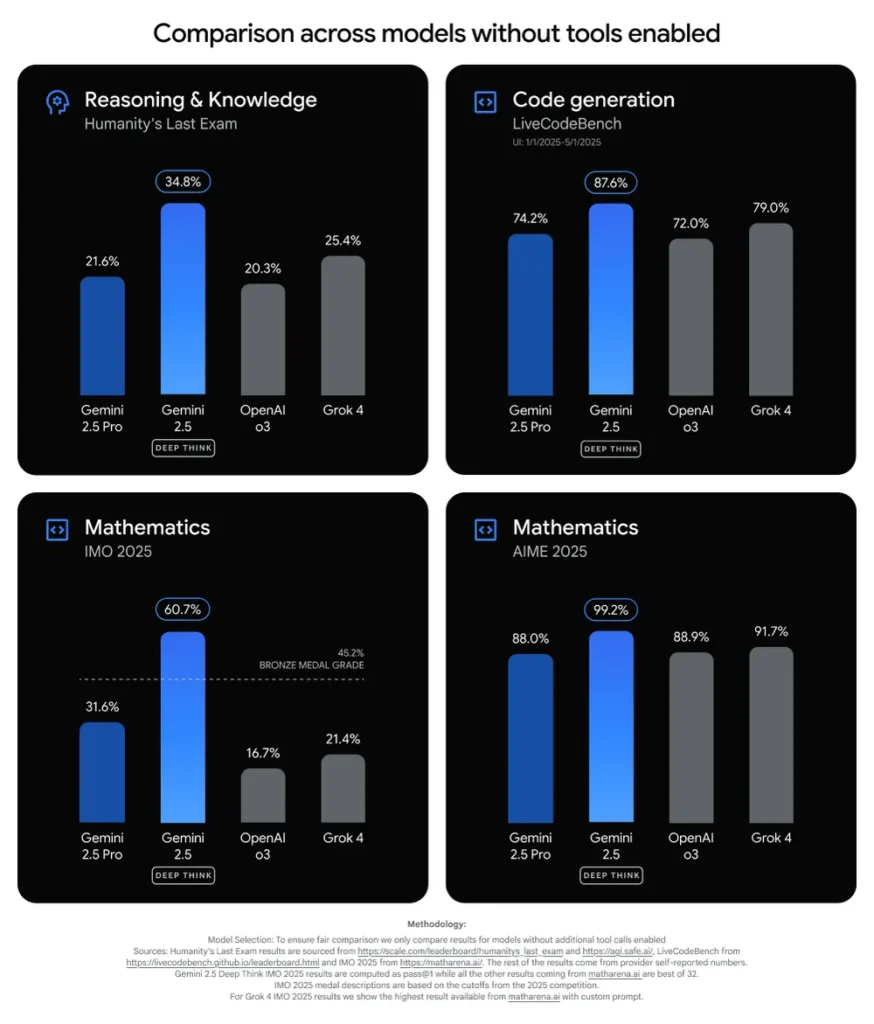
These aren’t just minor upgrades. These are leapfrog-level improvements in reasoning, creativity, and accuracy.
Deep Think isn’t only faster than before. It’s smarter, more deliberate, and built to handle the kinds of challenges that other models still fumble.
What About Safety and Refusals?
As Deep Think gets more powerful, Google has tightened the safety layer around it. The goal is to make the model more useful without letting it drift into risky or unreliable territory.
Compared to Gemini 2.5 Pro, Deep Think shows notable improvements in tone and objectivity. It’s less likely to take sides or make emotional-sounding claims. This matters a lot when you’re using it for research, writing, or analysis where neutrality is essential.
But with caution comes hesitation. Deep Think sometimes refuses queries that feel safe to humans, simply because they fall into ambiguous categories. That might be frustrating if you’re expecting a quick reply, but it’s part of Google’s wider strategy: limit hallucinations and prevent misuse, especially as the model becomes more capable.
Google is also running deeper frontier safety evaluations on Deep Think, particularly looking at how the model handles open-ended reasoning, sensitive topics, or high-stakes queries. They’re using these tests to decide when and how to open access to broader audiences.
The bottom line? Deep Think is safer, but also more selective. It filters more. It pauses more. And it doesn’t take shortcuts, even when the prompt seems harmless.
If you’re working in fields where accuracy and tone matter, that trade-off is worth it.
How to Access Deep Think in the Gemini App
If you’re a Google AI Ultra subscriber, Deep Think is already available inside the Gemini app on mobile.
To try it out:
- Open the Gemini app
- Select the 2.5 Pro model from the dropdown
- Toggle on the Deep Think option in the prompt bar
Once enabled, your inputs will be processed by Deep Think. The model will take more time to think, generate more structured outputs, and tap into tools like code execution and Google Search when needed.
There’s a catch. For now, users get a limited number of Deep Think prompts per day. This restriction helps Google manage load and monitor performance as the model rolls out more broadly.
What sets this experience apart is the response quality. You’ll notice longer answers, deeper explanations, and more thoughtful structure, especially on prompts that involve coding, research, or iterative thinking.
Google has also confirmed this in a post by Sundar Pichai, who highlighted that Deep Think will reach more developers via the Gemini API.. Select developers, enterprise users, and academics will get early access with and without tool integration, opening the door for custom workflows and large-scale applications.
This version of Deep Think is not a lab experiment. It’s a polished, public-facing tool that fits inside the apps people already use.
Why Deep Think Matters for the Future of AI
AI has made huge leaps in speed, fluency, and usability. But most models still work like enhanced autocomplete, trained to predict what comes next, not necessarily what makes sense after thinking it through.
Deep Think changes that.
It’s not just faster or bigger. It represents a shift in what AI is designed to do. Rather than react instantly, it’s trained to pause, explore, and reason. It’s more of a thinking partner than a chat tool.
This shift opens the door to something bigger: AI that works like a problem solver, not a shortcut. It mirrors how researchers, engineers, and designers actually think by weighing options, considering trade-offs, and iterating toward a better result.
What makes Deep Think different isn’t just the benchmarks, the math Olympiad scores, or the performance charts. It’s the fact that Google is testing a new philosophy: the best AI is the one that reflects before it speaks.
Whether you’re building something, exploring an idea, or solving something difficult, Deep Think offers a different kind of intelligence, one built for depth, not speed.
This is just the start. Daily prompt caps, API trials, and academic testing are all signs of a careful rollout. But even now, Deep Think offers a glimpse of what comes next.
AI that doesn’t just finish your sentence. It finishes your thought.
FAQ’s about Deep Think
What is Deep Think in the Gemini app?
Deep Think is a high-reasoning AI model available to Google AI Ultra subscribers via the Gemini app. It offers extended thinking time and parallel reasoning to solve complex problems.
Is Deep Think better than Gemini Pro?
Yes. Deep Think is more capable in tasks that require multi-step logic, creative iteration, and in-depth reasoning. It outperforms Gemini Pro in multiple benchmarks.
Can I access Deep Think for free?
No. Deep Think is currently available only to Google AI Ultra subscribers. It may become available via Gemini API in the future for select developers and academics.
What can Deep Think be used for?
It excels in code generation, scientific research, math problem solving, and creative design iteration — especially tasks that benefit from layered reasoning.
How does Deep Think differ from other AI tools?
Unlike fast-response models, Deep Think uses longer inference cycles and parallel thinking to explore multiple solutions before choosing the most optimal one.

